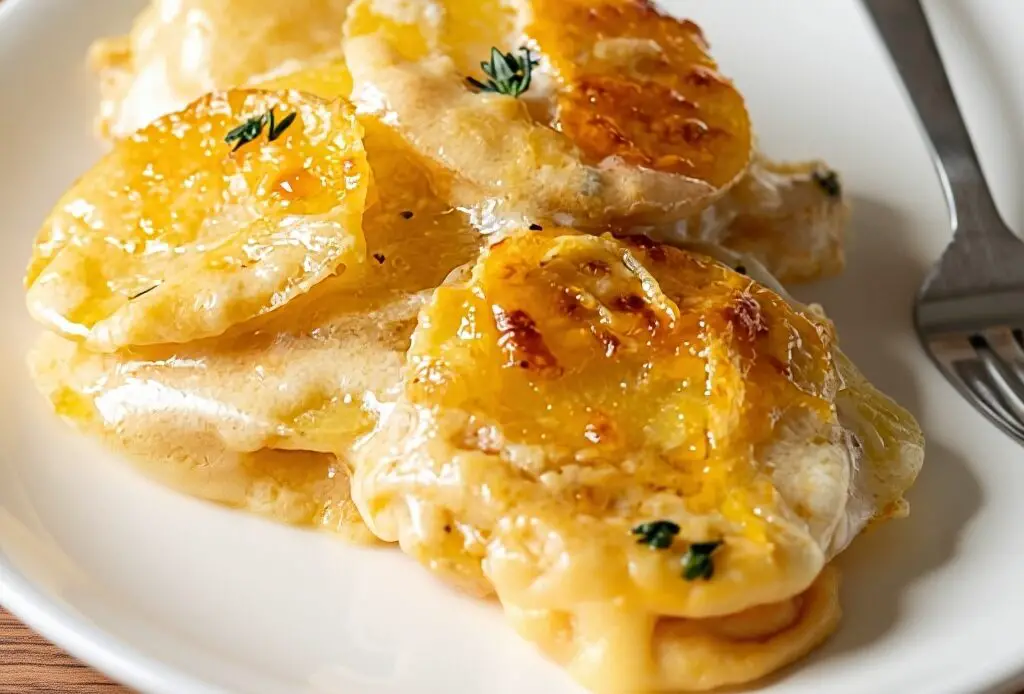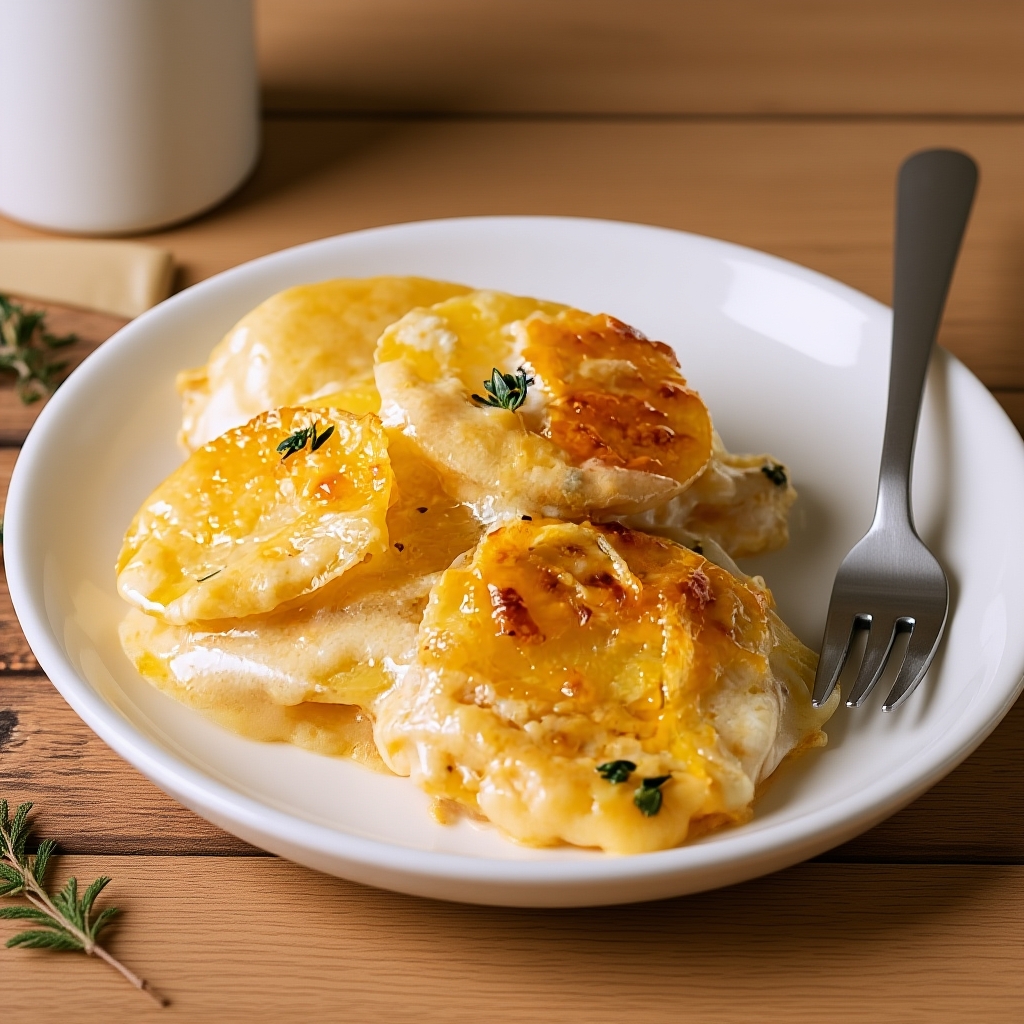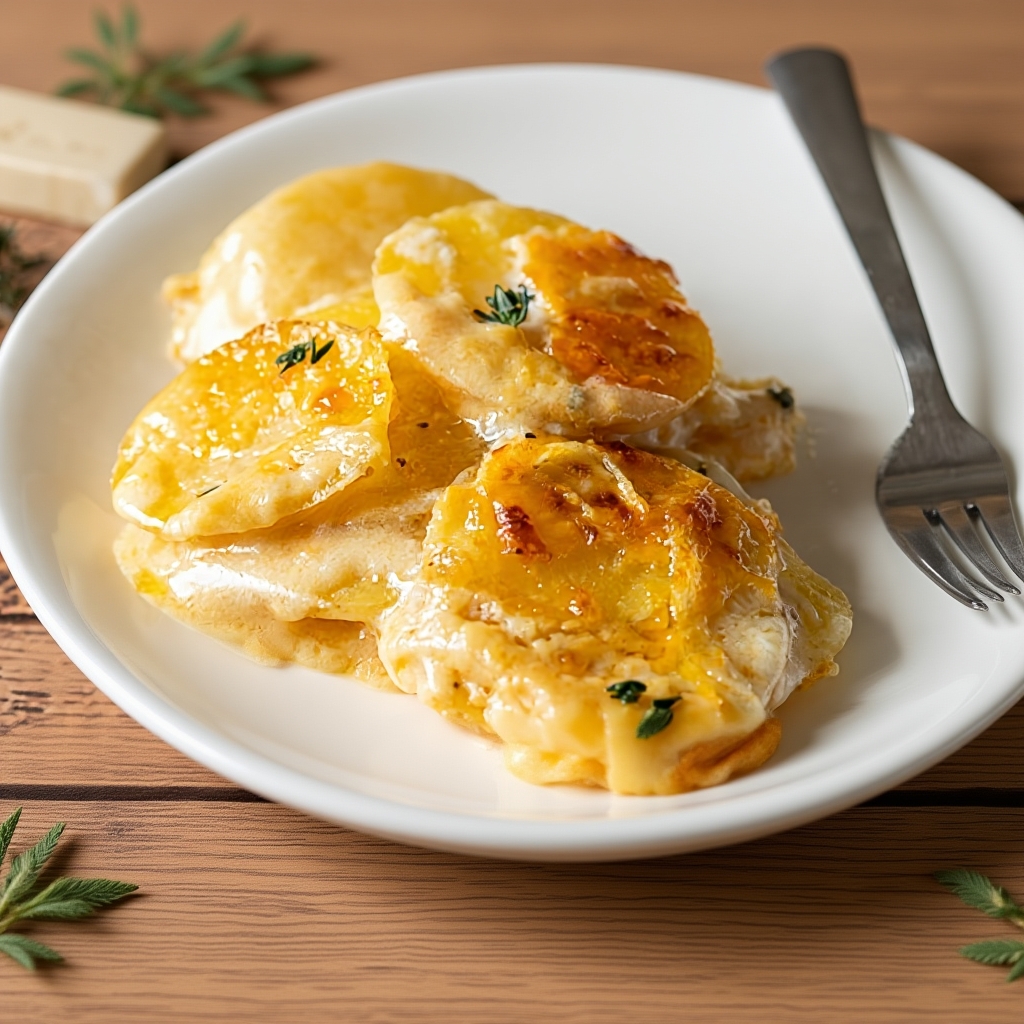
Scalloped potatoes are more than just a dish; they represent a comforting embrace on a cold winter evening, a staple at family gatherings, and a delightful addition to your dining table for any celebration. With their tender layers of potatoes basking in a richness that only cheese and cream can provide, cheesy and creamy scalloped potatoes are sure to elevate any meal into a memorable feast. The nostalgia of Grandma’s recipe or the delight of introducing this dish to a new generation evokes warm feelings and cherished memories. In this article, we will explore the history, preparation, variations, and serving suggestions for scalloped potatoes, ensuring you can recreate this delightful dish with perfect finesse.
What Are Scalloped Potatoes? A Deep Dive into the Classic
Scalloped potatoes are a classic casserole dish that features thinly sliced potatoes baked in a creamy sauce, typically made from milk or cream and often combined with cheese. The defining characteristic is their luxurious, creamy texture, which contrasts beautifully with the tender, slightly crispy tops of the potatoes.
Scalloped vs. Au Gratin: What’s the Difference?
This is a common point of culinary confusion! While both dishes are delicious layered potato bakes, the key difference lies in the ingredients and preparation:
- Scalloped Potatoes: The focus is on the creamy sauce. Traditionally, the dish was simply potatoes baked in milk or cream. While modern versions often include cheese, the primary characteristic is the velvety, liquid-based sauce that cooks and softens the potatoes.
- Au Gratin Potatoes: The name “au gratin” refers to the technique of topping a dish with breadcrumbs and/or cheese and browning it under a broiler. Au gratin potatoes are distinctly cheesier, often with cheese layered between the potatoes as well as on top.
The History and Origin
The origins of scalloped potatoes can be traced back to 19th-century England. The term “scallop” was originally a verb describing a method of cooking where food was thinly sliced and baked in a sauce. This technique was often done in a scallop shell, which may have also contributed to the name. As potatoes became a beloved staple across Europe and North America, this simple and comforting preparation method solidified its place as a culinary classic.

The Science of Perfect Scalloped Potatoes
The magic of this dish lies in simple food science. Understanding the “why” behind the steps will help you achieve flawless results every time.
- The Starch Factor: The type of potato you choose is crucial. Starchy potatoes like Russets break down slightly during cooking, releasing starches that naturally thicken the sauce. Waxy potatoes like Yukon Golds hold their shape better and result in a slightly less thick, but very creamy sauce.
- The Roux: The base of our creamy sauce is a classic roux (a mixture of fat and flour). Cooking the flour in butter toasts it, removing any raw flour taste and creating a powerful thickening agent. When you slowly whisk in the milk or cream, the starch granules from the flour swell and create a smooth, stable, and velvety sauce that won’t curdle in the oven.
- Even Slicing is Non-Negotiable: The most common failure in scalloped potatoes is unevenly cooked slices—some mushy, some still hard. Slicing the potatoes to a uniform thickness (about 1/8-inch) is the only way to guarantee they all cook through at the same rate. This is where a mandoline slicer becomes an invaluable tool.
Elevate your dish from good to unforgettable with these professional tips.
- Rinse or Soak? Don’t Do It! While you might rinse potatoes for other recipes, for scalloped potatoes, you want to keep the surface starch. This starch helps thicken the sauce as the dish bakes, contributing to a creamier final product. Simply peel and slice them right before layering.
- Warm Your Dairy: Adding cold milk or cream to a hot roux can cause it to clump. For the smoothest possible sauce, gently warm your milk or cream in the microwave or a separate saucepan before whisking it into the roux.
- Season Generously: Potatoes are notorious for absorbing a lot of salt. Be sure to season both the sauce and the potato layers. Taste your sauce before you assemble; it should taste slightly saltier than you think it needs to be.
- The Foil Tent is Your Friend: Covering the baking dish with foil for the first part of the cooking process is essential. It traps steam, which helps to cook the potatoes evenly and gently. Removing the foil for the last 20-30 minutes allows the top to become beautifully golden brown and bubbly.
- Let it Rest: This is a crucial step! Letting the casserole rest for at least 15 minutes after it comes out of the oven allows the sauce to set and reabsorb into the potatoes. Slicing into it immediately will result in a runnier sauce.
Serving Suggestions
Cheesy and creamy scalloped potatoes are a versatile side dish that pairs beautifully with a variety of main courses.
- Holiday Feasts: Serve alongside a baked ham, roast turkey, or a standing roast beef. The creamy potatoes are the perfect accompaniment to these savory mains.
- Weeknight Dinners: They elevate a simple roast chicken or pork chops into a special meal.
- Garnishing Ideas: Before serving, garnish with fresh herbs like chopped chives or parsley for a pop of color and freshness. A sprinkle of smoked paprika can also add beautiful color and a hint of smoky flavor.

Frequently Asked Questions (FAQ)
What is the difference between scalloped potatoes and au gratin potatoes?
Traditionally, scalloped potatoes are baked in a cream or milk sauce, while au gratin potatoes are cheesier and often topped with breadcrumbs. However, modern recipes often blur the lines, with many scalloped potato recipes including cheese.
Can I make scalloped potatoes in advance?
Yes, you can assemble the entire casserole up to a day in advance. Cover it tightly and refrigerate. You may need to add 10-15 minutes to the baking time when cooking it from cold.
How do I prevent my potatoes from turning gray?
Potatoes oxidize and turn gray when exposed to air. To prevent this, slice your potatoes and immediately place them in the prepared sauce or the baking dish as you layer them. Don’t slice them all and let them sit on the counter.
Can I use other types of cheese?
Absolutely! While cheddar is a classic, Gruyère is a fantastic choice for its nutty, complex flavor and excellent melting properties. A mix of cheeses like Monterey Jack and Parmesan also works wonderfully.
Conclusion
Cheesy and creamy scalloped potatoes are the epitome of comfort food. With their tender, layered potatoes and rich, velvety sauce, this dish is a timeless classic that brings warmth and joy to any table. By understanding the key ingredients and techniques, you can confidently create a flawless casserole that will have everyone asking for seconds.
PrintThe Ultimate Guide to Cheesy and Creamy Scalloped Potatoes
A classic and comforting side dish featuring thinly sliced potatoes baked in a rich, creamy cheese sauce until tender and golden brown. The ultimate comfort food for any occasion.
- Total Time: 1 hour 35 minutes
Ingredients
4 large Yukon Gold or Russet potatoes, peeled and thinly sliced (about 2.5 lbs)
1 medium onion, thinly sliced
4 tablespoons butter
1/4 cup all-purpose flour
2 cups whole milk, warmed
1 cup heavy cream, warmed
1 tablespoon Dijon mustard
1/4 teaspoon ground nutmeg
Salt and freshly ground black pepper to taste
1.5 cups sharp cheddar cheese, shredded
1/2 cup Parmesan cheese, grated
Fresh thyme or parsley for garnish
Instructions
1. Preheat your oven to 375°F (190°C). Generously grease a 9×13 inch baking dish with butter.
2. In a large saucepan, melt the 4 tablespoons of butter over medium heat. Whisk in the flour and cook for 1 minute to create a roux.
3. Gradually whisk in the warm milk and heavy cream until the mixture is smooth. Bring to a simmer and cook for 2-3 minutes, whisking constantly, until the sauce thickens.
4. Remove the saucepan from the heat. Stir in the Dijon mustard, nutmeg, salt, and pepper. Gradually stir in 1 cup of the shredded cheddar and all of the Parmesan cheese until melted and the sauce is creamy.
5. Arrange half of the sliced potatoes in an even layer in the bottom of the prepared baking dish. Top with half of the sliced onions.
6. Pour half of the cheese sauce evenly over the potatoes and onions.
7. Repeat the layers with the remaining potatoes and onions, and top with the remaining sauce.
8. Sprinkle the remaining 1/2 cup of cheddar cheese over the top.
9. Cover the dish tightly with aluminum foil and bake for 45 minutes.
10. Remove the foil and bake for another 25-30 minutes, or until the potatoes are tender when pierced with a fork and the top is bubbly and golden brown.
11. Let the dish rest for at least 15 minutes before serving. Garnish with fresh thyme or parsley.
Notes
9×13 inch baking dish
Mandoline slicer (recommended)
Large saucepan
Whisk
- Prep Time: 20 minutes
- Cook Time: 1 hour 15 minutes
Nutrition
- Serving Size: 8
- Calories: 450


